| The area of federal waters in the Gulf of Mexico closed to fishing as a result of oil release from the Deepwater Horizon disaster. Source: NOAA
|
The closing price of a share of BP stock. Source: Yahoo! Finance
|
|
[../../../files/137701_137800/137711/dispersant.png 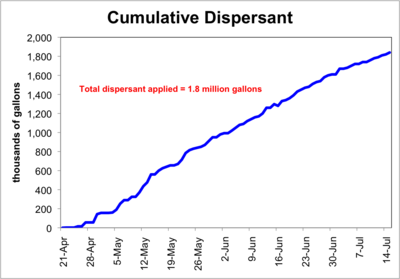 Cumulative amount of dispersant used by BP from April 21 to July 14, 2010. Source: Unified Command Cumulative amount of dispersant used by BP from April 21 to July 14, 2010. Source: Unified Command
]
|
[../../../files/137701_137800/137712/mortality.jpg  Marine life mortaility as of 10/14/2010. These are the consolidated numbers of collected fish and wildlife that have been reported to the Unified Area Command from the U.S. Fish and Wildlife Service (USFWS), National Oceanic and Atmospheric Administration (NOAA), incident area commands, rehabilitation centers and other authorized sources operating within the Deepwater Horizon/BP incident impact area. ] Marine life mortaility as of 10/14/2010. These are the consolidated numbers of collected fish and wildlife that have been reported to the Unified Area Command from the U.S. Fish and Wildlife Service (USFWS), National Oceanic and Atmospheric Administration (NOAA), incident area commands, rehabilitation centers and other authorized sources operating within the Deepwater Horizon/BP incident impact area. ]
|
|
[../../../files/137901_138000/137911/gom-oil-reserves.png 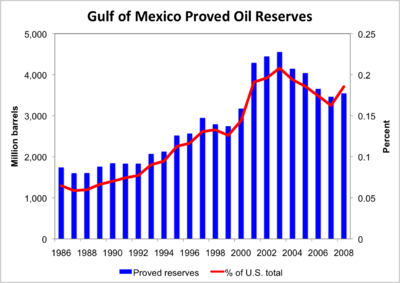 Proved oil reserves in the Gulf of Mexico, federal waters, 1986-2008. Source: Energy Information Administration ] Proved oil reserves in the Gulf of Mexico, federal waters, 1986-2008. Source: Energy Information Administration ]
|
Oil production in the Gulf of Mexico, federal waters, 1986-2008. Source: Energy Information Administration
|
| Government calculation of the fate of oil from the BP spill. Source: NOAA, USGS, DOE, DOI.
|
Bird recovery maps for week of October 12, 2010. These are the consolidated numbers of collected wildlife reported to the Unified Area Command from the U.S. Fish and Wildlife Service (USFWS), National Oceanic and Atmospheric Administration (NOAA), incident area commands, rehabilitation centers and other authorized sources operating within the Deepwater Horizon/BP incident impact area.
|
| The size of the surface oil slick as measured by satellite data. Source: Skytruth.org
|
[../../../files/138101_138200/138119/oil-landfall.jpg 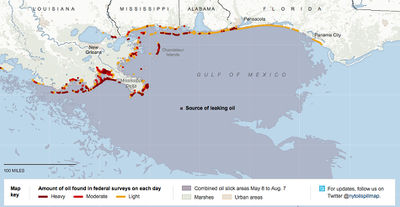 ] ]
|
| Crude oil producttion and the consumption of petroleum products in the U.S., 1950-2009. Source: Energy Information Administration
|
[../../../files/138101_138200/138182/flow-rate-estimates.jpg 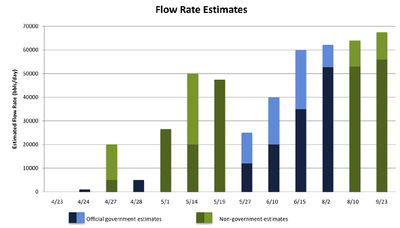 Chronology of estimates made of oil flow rate from the Macondo well. The darker portion of each bar represents the lower bound of the estimate, while the lighter portion represents the upper bound. Non-government estimates in May relied on video of the total (oil plus gas) discharge. To provide an accurate comparison, those estimates were reduced based on the then-current understanding that the flux was 50% oil. Source: National Commission on the BP Deepwater Horizon Oil Spill and Offshore Drilling ] Chronology of estimates made of oil flow rate from the Macondo well. The darker portion of each bar represents the lower bound of the estimate, while the lighter portion represents the upper bound. Non-government estimates in May relied on video of the total (oil plus gas) discharge. To provide an accurate comparison, those estimates were reduced based on the then-current understanding that the flux was 50% oil. Source: National Commission on the BP Deepwater Horizon Oil Spill and Offshore Drilling ]
|
| The number of lawsuits filed in the wake of the Deepwater Horizon Disaster. ERISA = Employee Retirement Income Security Act; OCSLA = Outer Continental Shelf Lands Act; RICO = Racketeer Influenced and Corrupt Organizations Act. Source: Deepwater Horizon Oil Spill Litigation Database, Environmental Law Institute, Accessed 7 November 2010.
|
[../../../files/144701_144800/144712/attempts.png 
]
|
| The Marine Spill Response Corporation (MSRC) is a non-profit company created by industry after the Exxon Valdez disaster to respond to oil spills, including catastrophic ones. In 2010, the MSRC had 400 employees and owned fifteen specialty ships, each with temporary storage for 4,000 barrels of recovered oil. The primary source of funding for MSRC is direct industry contributions. The BP Oil Spill Commission concluded that MSRC is under-funded: its equipment is old; it has limited resources to purchase new equipment, and no resources to develop new technologies. Source: National Commission on the BP Deepwater Horizon Oil Spill and Offshore Drilling
|
[../../../files/144701_144800/144730/spill-spending.png 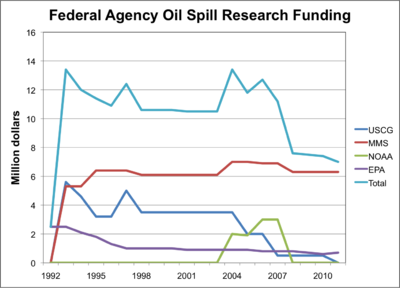 ] ]
|
| Source: National Commission on the BP Deepwater Horizon Oil Spill and Offshore Drilling
|
Source: National Commission on the BP Deepwater Horizon Oil Spill and Offshore Drilling
|
|
[../../../files/144801_144900/144802/revenues.png 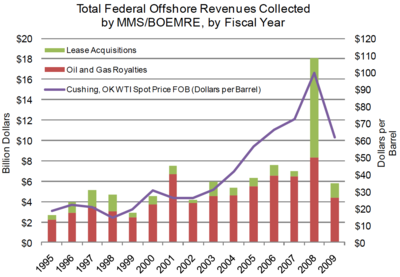 Source: National Commission on the BP Deepwater Horizon Oil Spill and Offshore Drilling ] Source: National Commission on the BP Deepwater Horizon Oil Spill and Offshore Drilling ]
|
Gulf of Mexico outer continental shelf leasing regions. Source: Department of the Interior Bureau of Ocean Energy Management, Regulation and Enforcement.
|
|
[../../../files/144801_144900/144819/submerged.png 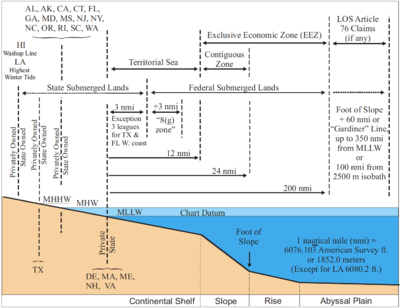 Offshore marine boundaries in the United States. Source: Department of the Interior, Bureau of Ocean Energy Management, Regulation and Enforcement ] Offshore marine boundaries in the United States. Source: Department of the Interior, Bureau of Ocean Energy Management, Regulation and Enforcement ]
|
[../../../files/144801_144900/144842/csb-areas.png  United States continental shelf boundary areas. Source: Department of the Interior, Bureau of Ocean Energy Management, Regulation and Enforcement ] United States continental shelf boundary areas. Source: Department of the Interior, Bureau of Ocean Energy Management, Regulation and Enforcement ]
|
|
[../../../files/144801_144900/144844/leasing.png 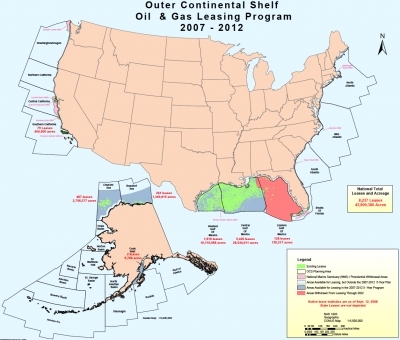 ] ]
|
Source: Department of the Interior, Bureau of Ocean Energy Management, Regulation and Enforcement
|
| Department of the Interior, Bureau of Ocean Energy Management, Regulation and Enforcement
|
[../../../files/145001_145100/145019/operators.png 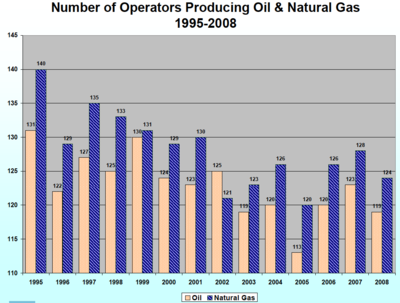 Number of oil and gas operators in the Outer Contiental Shelf (OCS). The Outer Continental Shelf (OCS) is the part of the internationally recognized continental shelf of the United States that does not fall under the jurisdictions of the individual U.S. states. Source: Department of the Interior, Bureau of Ocean Energy Management, Regulation and Enforcement ] Number of oil and gas operators in the Outer Contiental Shelf (OCS). The Outer Continental Shelf (OCS) is the part of the internationally recognized continental shelf of the United States that does not fall under the jurisdictions of the individual U.S. states. Source: Department of the Interior, Bureau of Ocean Energy Management, Regulation and Enforcement ]
|
| Natural gas production in the U.S. The Outer Continental Shelf (OCS) is the part of the internationally recognized continental shelf of the United States that does not fall under the jurisdictions of the individual U.S. states. Source: Department of the Interior, Bureau of Ocean Energy Management, Regulation and Enforcement
|
Oil production in the U.S. The Outer Continental Shelf (OCS) is the part of the internationally recognized continental shelf of the United States that does not fall under the jurisdictions of the individual U.S. states. Source: Department of the Interior, Bureau of Ocean Energy Management, Regulation and Enforcement
|
|
[../../../files/145001_145100/145081/deepwater-discoveries.png 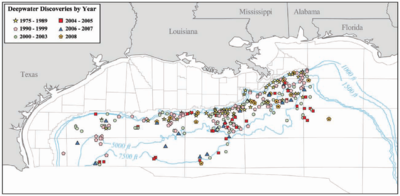 Deep water discoveries of oil and gas in the Gulf of Mexico. Deep water is defined as water depths greater than or equal to 1,000 ft (305 m), and ultra-deep water is defined as water depths greater than or equal to 5,000 ft (1,524 m). Source: Department of the Interior, Bureau of Ocean Energy Management, Regulation and Enforcement ] Deep water discoveries of oil and gas in the Gulf of Mexico. Deep water is defined as water depths greater than or equal to 1,000 ft (305 m), and ultra-deep water is defined as water depths greater than or equal to 5,000 ft (1,524 m). Source: Department of the Interior, Bureau of Ocean Energy Management, Regulation and Enforcement ]
|
[../../../files/145001_145100/145097/volume.png 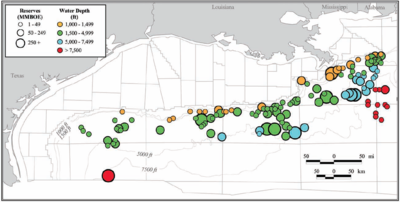 ] ]
|
|
[../../../files/145101_145200/145101/hubs.png 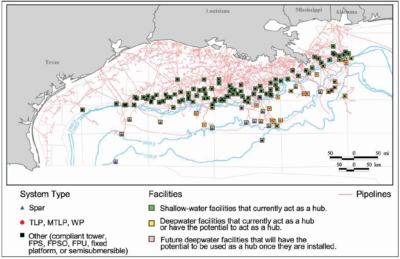 Deepwater hubs are surface structures that host production from one or more subsea projects. These hubs represent the first location where subsea production comes to the surface, and the hubs are the connection point to the existing pipeline infrastructure. Note that potential hubs are moving into deeper waters, expanding the infrastructure and facilitating additional development in the ultra-deepwater frontier. Source: Department of the Interior, Bureau of Ocean Energy Management, Regulation and Enforcement. ] Deepwater hubs are surface structures that host production from one or more subsea projects. These hubs represent the first location where subsea production comes to the surface, and the hubs are the connection point to the existing pipeline infrastructure. Note that potential hubs are moving into deeper waters, expanding the infrastructure and facilitating additional development in the ultra-deepwater frontier. Source: Department of the Interior, Bureau of Ocean Energy Management, Regulation and Enforcement. ]
|
[../../../files/145101_145200/145102/lease-by-depth.png 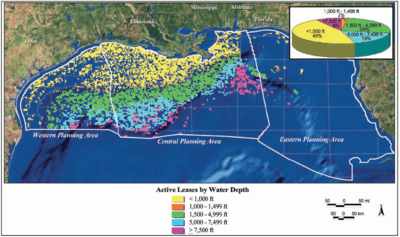 Active oil and gas leases in the Gulf of Mexico. Source: Department of the Interior, Bureau of Ocean Energy Management, Regulation and Enforcement. ] Active oil and gas leases in the Gulf of Mexico. Source: Department of the Interior, Bureau of Ocean Energy Management, Regulation and Enforcement. ]
|
| Outer Continental Shelf (OCS) operators and lessees are required to report incidents related to OCS operations to the Bureau including: fatalities, injuries, explosions, fires, lose of well control, collisions, pollution, and other incidents. Source: Department of the Interior, Bureau of Ocean Energy Management, Regulation and Enforcement
|
[../../../files/145101_145200/145184/dwra1.png 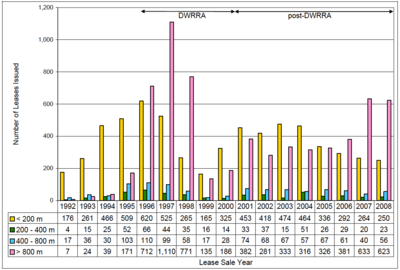 ] ]
|
|
[../../../files/145101_145200/145185/dwra2.png 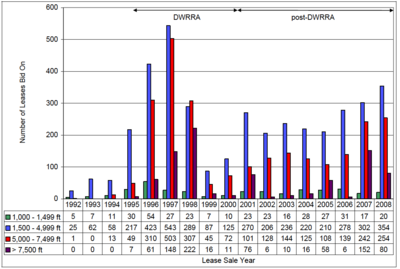 ] ]
|
[../../../files/145101_145200/145186/gom-features.png 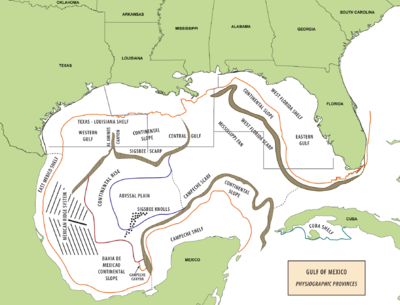 ] ]
|
|
[../../../files/145101_145200/145196/discoveries.png 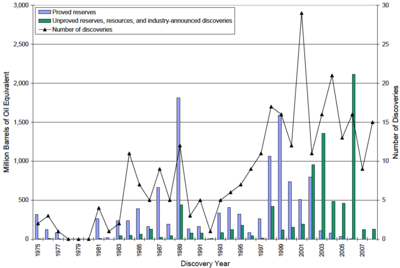 The number of deepwater oil and gas discoveries each year since 1975 in the Gulf of Mexico. Deep water is defined as water depths greater than or equal to 1,000 ft (305 m), and ultra-deep water is defined as water depths greater than or equal to 5,000 ft (1,524 m). Source: Department of the Interior, Bureau of Ocean Energy Management, Regulation and Enforcement. ] The number of deepwater oil and gas discoveries each year since 1975 in the Gulf of Mexico. Deep water is defined as water depths greater than or equal to 1,000 ft (305 m), and ultra-deep water is defined as water depths greater than or equal to 5,000 ft (1,524 m). Source: Department of the Interior, Bureau of Ocean Energy Management, Regulation and Enforcement. ]
|
Oil production in the Gulf of Mexico from shallow and deepwater. Deep water is defined as water depths greater than or equal to 1,000 ft (305 m). Source: Department of the Interior, Bureau of Ocean Energy Management, Regulation and Enforcement
|
| Natural gas production in the Gulf of Mexico from shallow and deepwater. Deep water is defined as water depths greater than or equal to 1,000 ft (305 m). Source: Department of the Interior, Bureau of Ocean Energy Management, Regulation and Enforcement
|
[../../../files/145101_145200/145199/map.png  Maximum historic daily oil production rates for each lease in the Gulf of Mexico (GOM) (i.e., the well with the highest historic production rate is shown for each lease). These maps show that many deepwater fields produce at some of the highest rates encountered in the GOM. Source: Department of the Interior, Bureau of Ocean Energy Management, Regulation and Enforcement ] Maximum historic daily oil production rates for each lease in the Gulf of Mexico (GOM) (i.e., the well with the highest historic production rate is shown for each lease). These maps show that many deepwater fields produce at some of the highest rates encountered in the GOM. Source: Department of the Interior, Bureau of Ocean Energy Management, Regulation and Enforcement ]
|
|
[../../../files/145101_145200/145200/map2.png 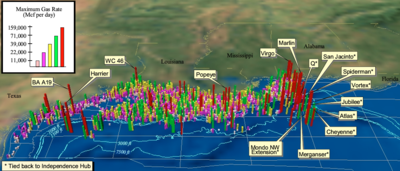 Maximum historic daily natural gas production rates for each lease in the Gulf of Mexico (GOM) (i.e., the well with the highest historic production rate is shown for each lease). These maps show that many deepwater fields produce at some of the highest rates encountered in the GOM. Source: Department of the Interior, Bureau of Ocean Energy Management, Regulation and Enforcement ] Maximum historic daily natural gas production rates for each lease in the Gulf of Mexico (GOM) (i.e., the well with the highest historic production rate is shown for each lease). These maps show that many deepwater fields produce at some of the highest rates encountered in the GOM. Source: Department of the Interior, Bureau of Ocean Energy Management, Regulation and Enforcement ]
|
The lag between lease acquisition and first production in the deep water Gulf of Mexico. Note that, since deepwater leases are in effect for 8 or 10 years, the data are incomplete beyond 1998. Source: Department of the Interior, Bureau of Ocean Energy Management, Regulation and Enforcement
|
|
[../../../files/145201_145300/145210/undiscovered.png 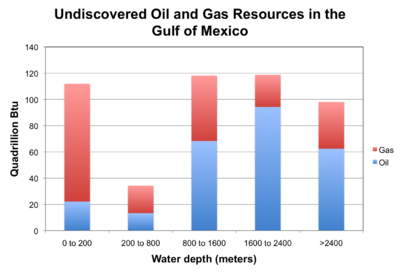 Undiscovered technically recoverable oil and gas resources by water depth in the Outer Continental Shelf of the Gulf of Mexico as of 2006. These are the volume of hydrocarbons that may be produced from a wellbore as a consequence of natural pressure, artificial lift, pressure maintenance (gas or water injection), or other secondary recovery methods. Source: Department of the Interior, Bureau of Ocean Energy Management, Regulation and Enforcement ] Undiscovered technically recoverable oil and gas resources by water depth in the Outer Continental Shelf of the Gulf of Mexico as of 2006. These are the volume of hydrocarbons that may be produced from a wellbore as a consequence of natural pressure, artificial lift, pressure maintenance (gas or water injection), or other secondary recovery methods. Source: Department of the Interior, Bureau of Ocean Energy Management, Regulation and Enforcement ]
|
The trend in the estimates made by the Department of Interior for the crude oil endowment of the Outer Continental Shelf in the Gulf of Mexico. Endowment is the sum of cumulative production, proved reserves (including reserve appreciation), and undiscovered technically recoverable resources. The OCS is the part of the internationally recognized continental shelf of the United States that does not fall under the jurisdictions of the individual U.S. states. Source: Department of the Interior, Bureau of Ocean Energy Management, Regulation and Enforcement
|
| The trend in the estimates made by the Department of Interior for the natural gas endowment of the Outer Continental Shelf in the Gulf of Mexico. Endowment is the sum of cumulative production, proved reserves (including reserve appreciation), and undiscovered technically recoverable resources. TCF = trillion cubic feet. The OCS is the part of the internationally recognized continental shelf of the United States that does not fall under the jurisdictions of the individual U.S. states. Source: Department of the Interior, Bureau of Ocean Energy Management, Regulation and Enforcement
|
The trend in the estimates made by the Department of Interior for the crude oil endowment of the Outer Continental Shelf in the Gulf of Mexico. Endowment is the sum of cumulative production, proved reserves (including reserve appreciation), and undiscovered technically recoverable resources. BOE = barrels of oil equivalent. The OCS is the part of the internationally recognized continental shelf of the United States that does not fall under the jurisdictions of the individual U.S. states. Source: Department of the Interior, Bureau of Ocean Energy Management, Regulation and Enforcement
|
|
[../../../files/145201_145300/145216/oil-estimate-trend.png  The trend in the estimates made by the Department of Interior for the crude oil endowment of the Outer Continental Shelf in the Gulf of Mexico. Endowment is the sum of cumulative production, proved reserves (including reserve appreciation), and undiscovered technically recoverable resources. The OCS is the part of the internationally recognized continental shelf of the United States that does not fall under the jurisdictions of the individual U.S. states. Source: Department of the Interior, Bureau of Ocean Energy Management, Regulation and Enforcement ] The trend in the estimates made by the Department of Interior for the crude oil endowment of the Outer Continental Shelf in the Gulf of Mexico. Endowment is the sum of cumulative production, proved reserves (including reserve appreciation), and undiscovered technically recoverable resources. The OCS is the part of the internationally recognized continental shelf of the United States that does not fall under the jurisdictions of the individual U.S. states. Source: Department of the Interior, Bureau of Ocean Energy Management, Regulation and Enforcement ]
|
|























